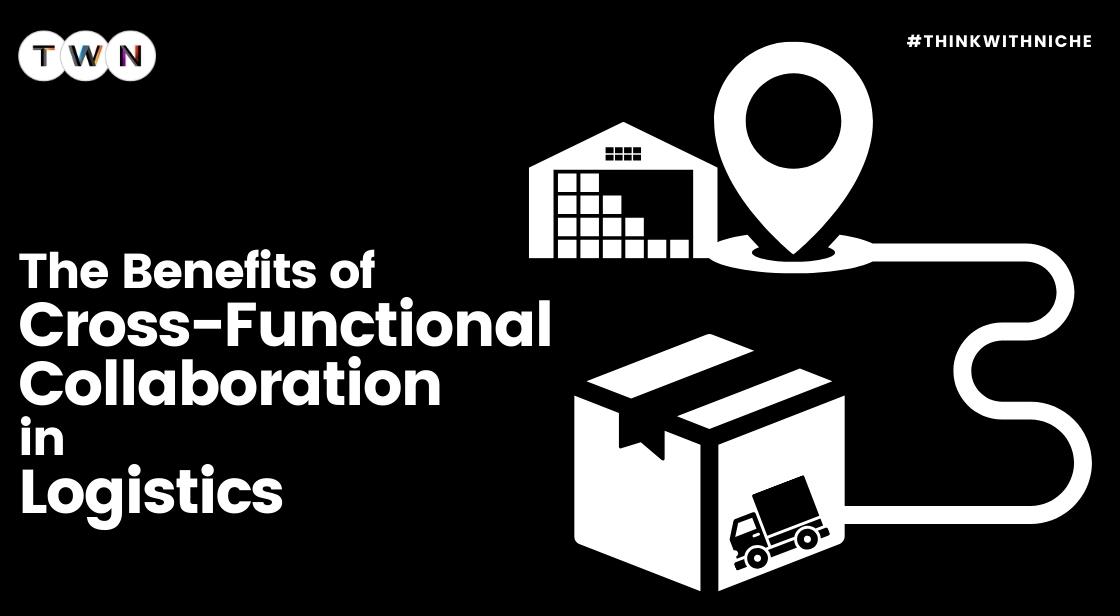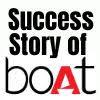The Benefits Of Cross-Functional Collaboration In Logistics

Blog Post
When logistics teams work in isolation, inefficiencies multiply- but when they unite, performance skyrockets. Discover how breaking silos and fostering cross-functional collaboration can transform your supply chain into a well-oiled, customer-focused powerhouse.
The Power of Collaboration in Modern Logistics
Today’s logistics operations are more complex than ever.
With global supply chains, fluctuating demand, and tight delivery schedules, efficiency is no longer optional- it is survival.
The organizations leading the way are those that treat collaboration not as a nice-to-have, but as a core strategy for operational excellence.
Cross-functional collaboration brings together different departments- from procurement to sales to customer service- to work toward a shared vision.
Instead of each team focusing solely on its own objectives, this approach promotes shared accountability, faster problem-solving, and smarter decision-making.
The result is a supply chain that is agile, responsive, and better equipped to meet market demands.
Breaking Down Silos for Supply Chain Success
Siloed operations are one of the biggest barriers to efficiency in logistics.
When departments hold information close and fail to communicate, small problems can escalate into costly disruptions.
Collaboration ensures that every team member has access to accurate, real-time information, enabling proactive responses to challenges before they affect customers.
By aligning strategies across departments, businesses reduce duplication of efforts, improve process flow, and eliminate blind spots that can cause delays or quality issues.
Why You Must Read This Blog Post
This blog post/ article is more than just theory- it is a practical guide to understanding how cross-functional teamwork can deliver measurable benefits to logistics operations.
Here you will learn:
- How shared information improves operational agility
- Ways collaboration leads to streamlined processes and cost savings
- The direct connection between teamwork and customer satisfaction
- How joint decision-making improves risk management
- The role of collaboration in integrating 3PL logistics services
If you want to build a more resilient, responsive, and customer-focused supply chain, this is your blueprint.
Logistics is a dynamic and complex task, which needs effective coordination of numerous departments and stakeholders. Transportation and warehousing are not the only means that makes the movement of products between the suppliers and customers efficient. It entails planning, procurement, inventory management and customer service among others.
The increased cross-functional cooperation in the logistics domain has become an essential element when it comes to increasing the overall efficiency and satisfying customer expectations. Such a strategy will promote collaborative efforts by various teams that pursue similar objectives and eliminate conventional silos that inhibit communication and problem solving.
This blog post/ article delves into the advantages of cross-functional cooperation within the sphere of logistics and the way in which such cooperation can improve the performance throughout the supply chain.
Improved Communication And Information Sharing
Cross-functional collaboration has one of the greatest benefits, which includes increased departmental communication.
By having information flowing freely between logistics, procurement, sales and customer service teams, the results also result in less miscommunication and hold ups slowing the process down. It gives the ability to notice possible problems such as low supply or delivery lag in advance by providing real-time data exchange so that they can be dealt with proactively.
Such seamless interaction is vital in the operation of the current high-velocity supply chains whose success depends upon their responsiveness to the customer.
Enhanced information sharing also creates a more transparent environment.
Teams would be in a better position to get to know about the challenges and constraints of the other members and be more sympathetic and cooperative.
To give a case example, logistics personnel are able to understand the urgency used by sales when catering to a large customer whereas procurement may refer to the advice given by logistics on lead times in terms of emphasis on sourcing.
The common ground also results in more aligned strategies and easier overall operations.
Greater Efficiency And Process Optimization
Functional collaboration promotes efficiency as companies have the opportunity to streamline operations in a coordinated manner instead of doing things individually.
They are able to detect redundancies, bottlenecks, and inefficiencies in case there is collaboration between departments.
In an example, coordinating production with transportation cuts costly delays, and also saves the costs of carrying inventories. Functions such as integrated plans can be formed by cross-functional teams so as to reduce waste and workflow drafting.
Furthermore, collaborative problem-solving encourages innovation and continuous improvement.
Various opinions among departments give rise to innovative solutions that could not be found otherwise. Such a staff with logistics professionals, warehouse said, and I.T. experts will be able to implement improved routing systems or use automation to greater extent.
This mutual accountability in results creates accountability and makes the improvement to be sustainable as opposed to short-term fixes.
Enhanced Customer Service And Satisfaction
Cross functional teamwork has a direct relation with customer service in that orders get filled correctly and at precisely the right time.
Customers can obtain consistent information, and they can get their updates on a timely basis when there is a scenario of coordination of activities in sales, logistics, and customer support teams.
This coordination decreases or minimizes the errors of wrong shipment or late deliveries which may tarnish the image of a company.
Additionally, joint logistics ventures will be able to be more adaptable to the fluctuating customer circumstances.
To give one example, cross-functional communication would allow changing patterns of inventory distribution or adjusting transport plans rather quickly during high seasons or other unforeseen incidents. Firms, which promote such partnership, are in a more advantageous position to satisfy their customers and create long-term loyalty.
Competitive advantage is also posed by the ability to deliver quality services under setbacks.
Support For Strategic Decision Making
The logistics choices usually have a far reaching effect on the organization in terms of costs, inventory and customer relation. With cross-functional collaboration, the decisions would be based on contributions of all the concerned parties ensuring that the decisions made become more informed and balanced.
Companies can coordinate the logistics strategies and business goals by having procurement, finance, sales, and logistics teams participate in the planning.
This collaborative approach also facilitates better risk management. Teams are able to prepare a contingency plan when they share information regarding market trends, the reliability of the suppliers, or transportation hindrances.
This type of collective planning makes things more resilient and prevents expensive surprises.
Organizations which adopt cross-functional collaboration are agile and able to respond to any change in circumstance.
Support For 3PL Logistics Services Integration
Most firms have turned to third party logistic providers to outsource some segments of their supply chain. To be able to integrate with 3PL logistics services effectively, there is a need to have close relations between internal teams and third party suppliers.
This is made easier through cross functional teamwork in a business as it helps to ascertain that all departments will be consistent with requirements as well as feedback to the 3PL company.
In cases where the procurement, IT and logistics departments collaborate, communication can be flowed easily with the 3PL services to enhance visibility and control.
The centralization leads to better consolidation of shipments, inventory and quality of service. Depending on the outcomes, the businesses are able to utilize to their full extent the knowledge and capacity of 3PL logistics providers without losing coherence and efficiency of operations.
Improved Employee Engagement And Culture
The cross-functional arrangement also plays a positive role in the engagement of employees and organizational culture. Employees often feel more valued and motivated in a way when they realize that their efforts contribute to the higher goals of the company or when they perceive that their job requires collaboration.
Teaming promotes the application of knowledge sharing and advancement of the staff in terms of building new knowledge and skills outside the area of operation of the staff.
The systematic cooperation between people diminishes the related conflicts and ensures respectful attitude to others. It produces an atmosphere where learning and betterment are emphasized.
Effective logistics performance can also be propagated by using the engaged employees which can be more likely to introduce innovative ideas and to support change initiatives.
Conclusion
There are many advantages of cross-functional collaboration in logistics, such as increased communication, efficiency, customer service and enhancement of strategic decision-making.
Through a silo buster approach and teamwork, organizations are able to streamline their operations in the supply chain and better determine how they can meet the needs of the market.
It is also made easier when there is internal coordination through integration with 3PL logistics services hence streamlined coordination and better service level.
Moreover, collaboration fosters the engagement and organizational culture in the case of employees.
It is a fact that the practice of cross-functional collaboration should be embraced by any business in the modern complex world in order to realize the values of logistics excellence and maintain a competitive edge.
Key Takeaways for ThinkWithNiche Readers
- Information transparency prevents disruptions and improves responsiveness.
- Aligned strategies between departments reduce waste and improve workflow.
- Cross-functional problem-solving sparks innovation and sustainable improvements.
- Customer experience benefits directly from coordinated operations.
- Integrated decision-making enhances risk management and long-term planning.
- Strong team culture boosts employee engagement and retention.
Reader’s Disclaimer: The insights shared in this blog post/ article are for informational purposes only. ThinkWithNiche does not endorse or promote any specific company, product, or service mentioned herein. Readers should conduct independent research before applying strategies to their own operations.
You May Like
EDITOR’S CHOICE












